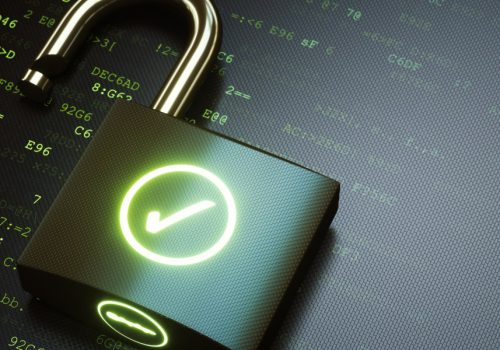As the cybersecurity landscape evolves, the need for skilled professionals becomes ever more critical. The industry faces a significant skills gap, but embracing diversity and inclusion in training offers a powerful solution. This article explores how diversity improves cybersecurity outcomes, highlights actionable strategies for organizations, and showcases initiatives driving change.
Why Diversity Matters in Cybersecurity
Cybersecurity needs people from all backgrounds. Different perspectives improve problem-solving, threat detection, and innovation. Ethical hackers, analysts, and security architects bring unique skills. A strong cybersecurity team should reflect the diversity of the communities it protects.
Jane Frankland, a cybersecurity expert and advocate for diversity, highlights the importance of inclusion in the industry: “Diversity isn’t just about fairness; it’s about performance. Inclusive teams solve problems faster, innovate better, and strengthen security for everyone.”
Research from cybersecurity leaders suggests that diverse teams are more effective at identifying and mitigating threats. According to a study by the Aspen Digital Cybersecurity Group, organizations with diverse teams benefit from a broader range of problem-solving approaches, leading to improved security outcomes. Cybercriminals operate globally, and an inclusive workforce that understands different cultural and linguistic nuances is better equipped to counter cyber threats.
The Cyber Skills Gap and Inclusive Training
The industry faces a global shortage of 4 million professionals. Many people struggle to access training and certification. To close the gap, training must be more accessible and inclusive. The lack of representation in cybersecurity training often discourages individuals from non-traditional backgrounds from pursuing careers in the field. When training materials and mentorship programs fail to consider diverse learners, barriers to entry remain high.
Diversity, equity, and inclusion (DEI) initiatives play a key role in tackling this challenge. A holistic approach that combines targeted outreach, flexible learning options, and inclusive hiring practices can open doors for underrepresented groups. By embedding DEI principles into cybersecurity training, organizations not only expand the talent pool but also ensure long-term workforce sustainability.
Common Barriers to Cybersecurity Training
Neurodivergent learners often have strengths in attention to detail and pattern recognition, yet traditional training can be rigid and overwhelming. Flexible assessments, gamification, and sensory-friendly environments can help make training more accessible.
Disabled learners face challenges with training platforms that lack accessibility features. Many programs do not support screen readers, captions, or flexible schedules. Designing courses with accessibility in mind ensures that all learners can participate.
Parents, mothers in particular, often struggle to balance training with family responsibilities. Many programs fail to offer flexible options. Providing remote learning, flexible scheduling, and structured returner programs can remove these barriers.
Career returners may feel disconnected from industry trends and lack confidence in their ability to re-enter the workforce. Refresher courses and mentorship programs help bridge the gap and ease their transition back into cybersecurity roles.
Night and shift workers often cannot access training due to programs being scheduled only during standard business hours. Offering self-paced and asynchronous learning options allows them to participate in cybersecurity training at a time that suits their needs.
Non-English speakers may struggle with training materials that are primarily in English, limiting their ability to learn effectively. Translating materials and using AI-driven translation tools can make cybersecurity education accessible to a wider audience.
How to Make Cybersecurity Training More Inclusive
Using Universal Design for Learning (UDL) principles makes training accessible to all. Presenting content in multiple formats such as text, video, audio, and interactive tools allows learners to engage in ways that suit their needs. Allowing learners to demonstrate their understanding through different methods, such as hands-on labs, oral presentations, or written assessments, accommodates different learning styles. Gamification, real-world examples, and flexible assessments keep learners motivated and engaged.
Flexible learning formats expand accessibility. Self-paced, asynchronous courses let learners study on their own time. Short, focused learning modules break complex topics into manageable parts. Live and recorded training sessions provide flexibility for those with different schedules.
Prioritizing accessibility ensures that all learners can participate. Screen reader compatibility, subtitles, transcripts, and sign language interpretation should be included in training programs. Alternative assessment methods should be offered for those who find traditional written exams challenging.
Supporting parents and career changers makes cybersecurity more accessible. Training programs that fit different schedules help those balancing multiple responsibilities. Mentorship and networking opportunities help returners build confidence and navigate career transitions. Recognizing transferable skills allows individuals from other industries to enter cybersecurity more easily.
Translating and localizing resources expands learning opportunities. Providing multilingual course materials helps non-English speakers access cybersecurity training. AI-driven translation tools support real-time translations in webinars and discussions. Collaborating with local educators ensures content is culturally relevant and accessible to a broader audience.
Encouraging allyship in cybersecurity fosters an inclusive industry. Inclusive hiring and training practices should be promoted across organizations. Mentorship programs create opportunities for underrepresented professionals. Supporting initiatives that amplify diverse voices strengthens the entire cybersecurity workforce.
Marketing and promotional materials for cybersecurity training should also reflect diversity. Representation in course advertisements, websites, and outreach campaigns matters. When potential learners see people who look like them in marketing materials, they are more likely to feel included and encouraged to apply. A common phrase, “see it to be it,” applies here, visible representation of diverse professionals in cybersecurity helps break down barriers and inspire broader participation. Organizations should ensure that promotional images showcase people from different backgrounds, genders, and abilities in cybersecurity roles. This approach fosters inclusivity and challenges outdated stereotypes about who belongs in the field.
Inclusive Security Awareness Training Content
Diversity should not only be reflected in training access but also in the content itself. Many cybersecurity training materials reinforce biases by only featuring a narrow representation of cyber threats, attack scenarios, and victim profiles. Inclusive security awareness training should reflect real-world diversity by:
- Using inclusive characters and scenarios: Training materials should feature people from different ethnic backgrounds, genders, disabilities, and ages to ensure learners see cybersecurity as relevant to them.
- Acknowledging different threat perceptions: Cyber threats vary by geography, profession, and socio-economic status. Training should include real-world examples that resonate with diverse audiences.
- Avoiding stereotypes: Many cybersecurity awareness materials depict cybercriminals in outdated or culturally insensitive ways. A more inclusive approach recognizes that cybercrime is a global challenge with actors from various backgrounds.
- Ensuring accessibility: Training platforms should offer customizable font sizes, color contrast options, and language preferences to accommodate a diverse workforce.
By incorporating diversity into cybersecurity training content, organizations can make learning more relatable and effective for all participants.
Fortify Institute (Ireland)
Fortify Institute is dedicated to making cybersecurity training accessible to diverse learners, and those from underrepresented backgrounds. By offering flexible online courses that accommodate different schedules, providing industry-recognized certifications, and integrating inclusive learning strategies such as Universal Design for Learning (UDL), Fortify Institute ensures that more individuals can develop cybersecurity skills and advance in their careers.
PECB and Diversity Cyber Council: Advancing Inclusive Cybersecurity Training
By joining forces, PECB and the Council aim to foster a culture that values varied perspectives and experiences, ultimately enhancing the field’s resilience and innovation. The collaboration emphasizes the importance of equitable access to cybersecurity education and training, empowering underrepresented groups and creating a more diverse talent pipeline. Together, they are committed to establishing standards, frameworks, and initiatives that support diversity, ensuring that the cybersecurity landscape reflects the society it protects.
Understanding the Difference Between Equality and Equity
A useful way to understand inclusivity is through the well-known illustration comparing equality and equity. Equality means treating everyone the same, regardless of their differences. Equity means providing people with what they need to succeed based on their specific circumstances. The image below demonstrates this difference by showing three individuals of different heights trying to see over a fence. In the equality approach, each person receives the same-sized box, but the shortest individual still cannot see. In the equity approach, each person receives a different-sized box, or none, ensuring that all can see over the fence.

This concept applies to cybersecurity training, ensuring all learners receive the support and resources they need rather than offering a one-size-fits-all solution.
Actionable Strategies for Organizations
For organizations looking to create more inclusive cybersecurity training, here are some practical steps they can take:
- Conduct an Accessibility Audit: Evaluate existing training materials and platforms for accessibility, ensuring they accommodate diverse needs, such as screen reader compatibility and multiple learning formats.
- Implement Universal Design for Learning (UDL): Offer content in different formats (video, text, interactive), allow flexible assessments, and provide multiple engagement options.
- Partner with Diversity-Focused Organizations: Collaborate with groups that support underrepresented communities in cybersecurity to improve outreach and inclusion.
- Provide Financial Support and Mentorship: Offer scholarships, bursaries, or mentorship programs to help individuals from underrepresented backgrounds access training and career opportunities.
- Ensure Inclusive Marketing and Outreach: Use diverse representation in promotional materials and actively encourage participation from women, neurodivergent individuals, and other underrepresented groups.
- Flexible Training Options: Offer self-paced and asynchronous training to accommodate shift workers, parents, and those with other commitments.
- Measure Impact: Track diversity in enrolment, retention rates, and post-training employment outcomes to evaluate the effectiveness of inclusion efforts.
The Future of Cybersecurity Depends on Inclusion
As cyber threats evolve, the industry needs skilled professionals from all backgrounds. Inclusive training helps close the skills gap and strengthens security teams. By making cybersecurity education accessible to everyone, we build a workforce that is prepared for the challenges ahead.
Achieving diversity, equity, and inclusion (DEI) in cybersecurity is essential for creating a safer digital world. While statistics, barriers, and initiatives may differ, they all agree on the need for a more diverse workforce. By increasing access to cybersecurity training and education and breaking down systemic barriers, the community can empower individuals from diverse backgrounds, leading to innovative solutions and a more resilient digital society for all.









